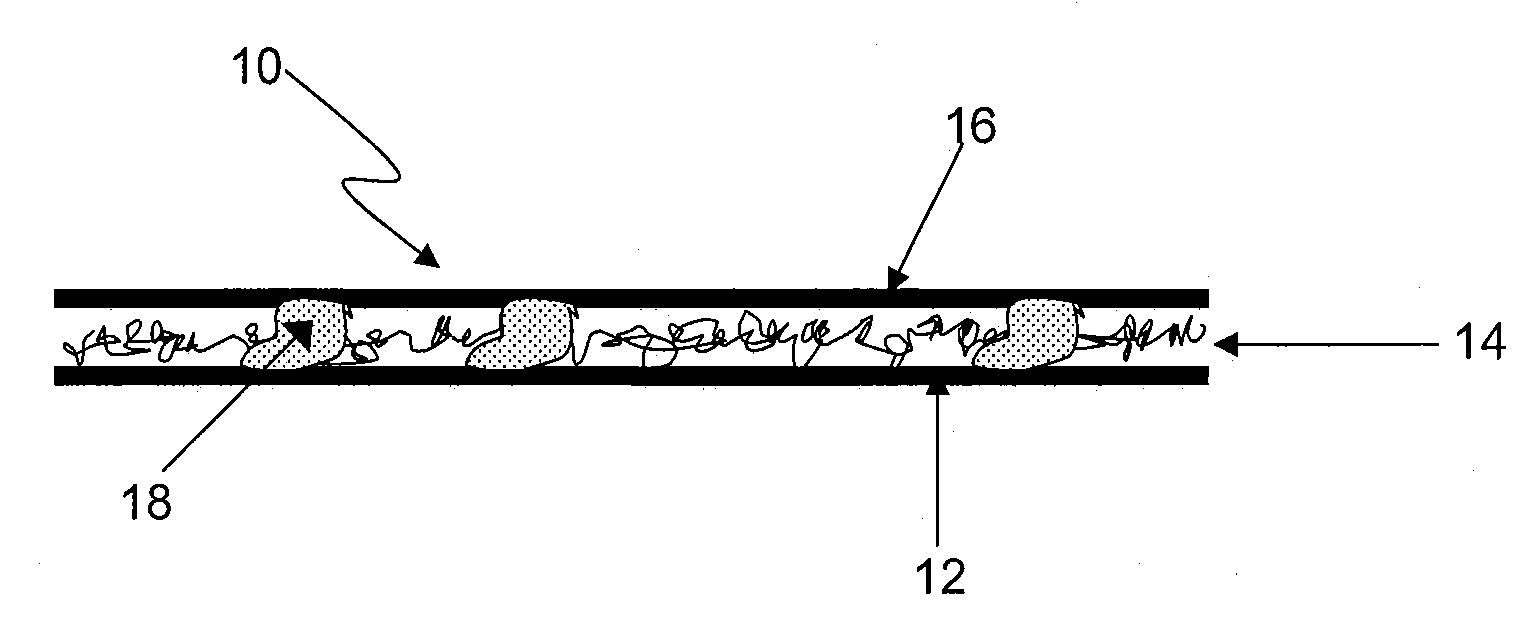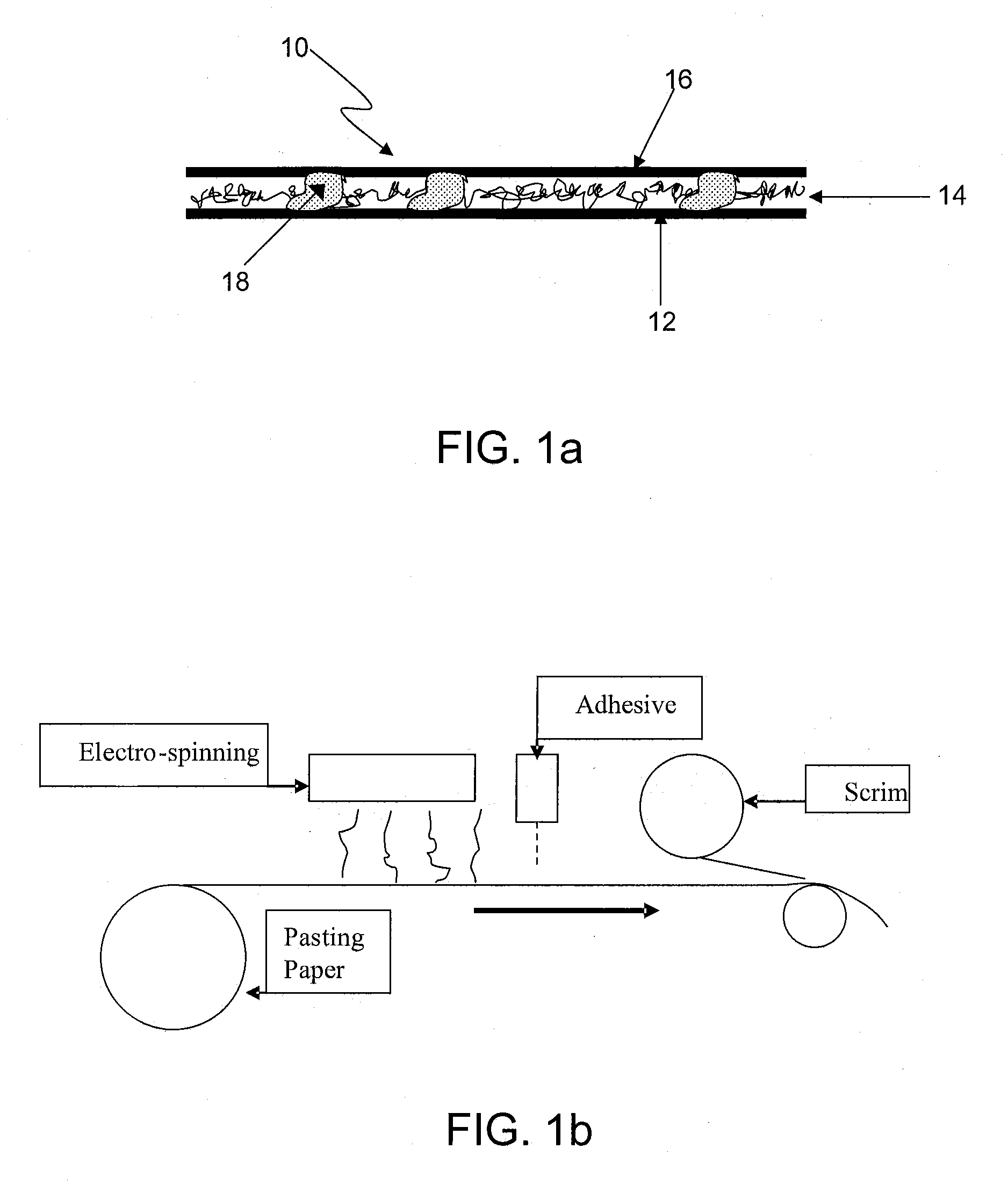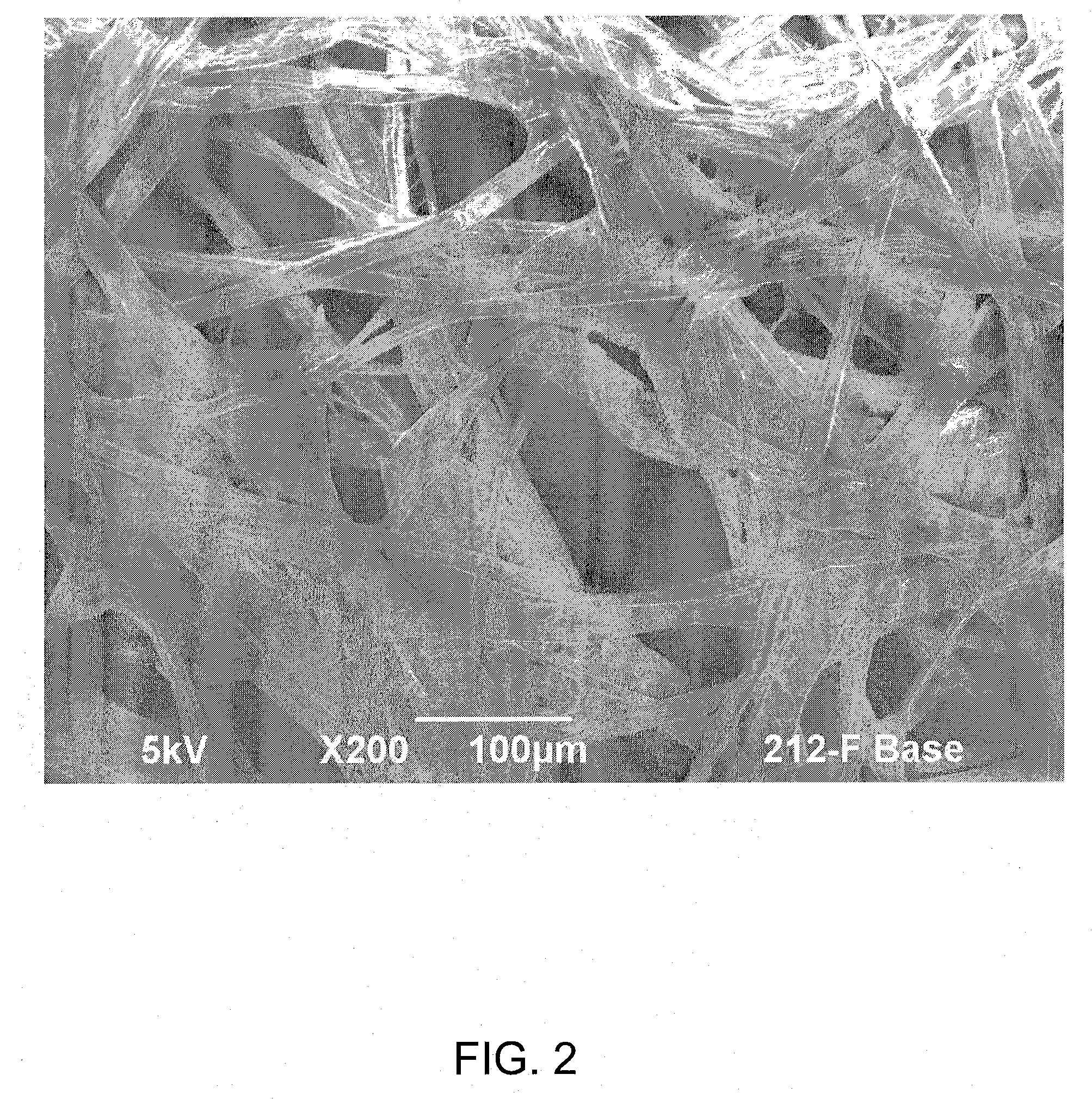Battery separator structures
a battery separator and structure technology, applied in the direction of cell components, final product manufacturing, sustainable manufacturing/processing, etc., can solve the problems of limiting battery performance in terms of capacity and discharge rate, consuming additional volume in the battery, and consuming electroly
- Summary
- Abstract
- Description
- Claims
- Application Information
AI Technical Summary
Benefits of technology
Problems solved by technology
Method used
Image
Examples
Embodiment Construction
[0027]The invention will now be described with reference to the Figures, wherein similar numbers indicate similar features. The figures depict certain nonlimiting embodiments of the invention. FIGS. 1a, 1b and 5 are not to scale, and are not intended to serve as engineering drawings.
[0028]The invention provides a multilayer composite sheet suitable for use as a battery separator, shown schematically in FIG. 1a. In some embodiments, the sheet may be used as a combined battery pasting paper / separator, as will now be discussed. The sheet, shown generally at 10, includes a fibrous layer 12 upon which resides an electrically nonconductive polymeric nanofiber layer 14, upon which in turn resides a polymeric scrim layer 16. In the present case, the fibrous layer 12 is a pasting paper. Discrete particles of adhesive 18 adhere the nanofiber layer to both the paper layer and the scrim layer, thereby integrating the three layers to form the composite sheet. In this particular embodiment, the a...
PUM
| Property | Measurement | Unit |
|---|---|---|
| Pore size | aaaaa | aaaaa |
| Pore size | aaaaa | aaaaa |
| Thickness | aaaaa | aaaaa |
Abstract
Description
Claims
Application Information
 Login to View More
Login to View More - R&D
- Intellectual Property
- Life Sciences
- Materials
- Tech Scout
- Unparalleled Data Quality
- Higher Quality Content
- 60% Fewer Hallucinations
Browse by: Latest US Patents, China's latest patents, Technical Efficacy Thesaurus, Application Domain, Technology Topic, Popular Technical Reports.
© 2025 PatSnap. All rights reserved.Legal|Privacy policy|Modern Slavery Act Transparency Statement|Sitemap|About US| Contact US: help@patsnap.com



